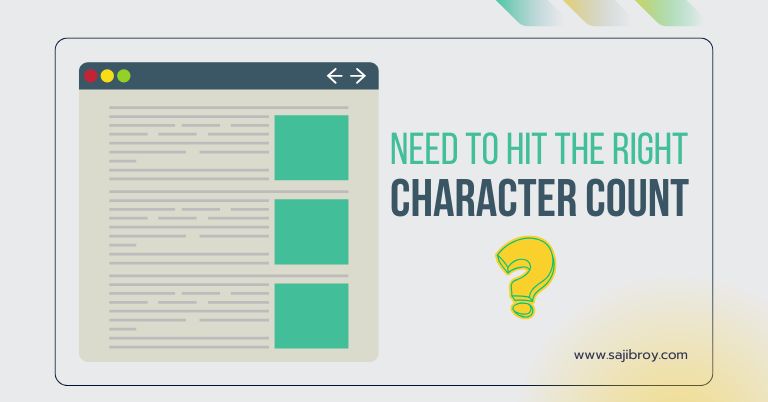Google Analytics is an incredibly valuable tool for businesses looking to understand their online audience and drive sales through targeted advertising. However, it’s important to recognize that not everything about Google Analytics remarketing is a benefit. In this blog, I’ll dive into some of the limitations of Google Analytics remarketing and why it’s crucial to understand what it cannot do. Understanding the non-benefits of Google Analytics remarketing will help you make informed decisions about your marketing strategy and ensure that you’re using this powerful tool to its fullest potential. Whether you’re just starting out with digital marketing or are a seasoned pro, understanding the limitations of Google Analytics remarketing is essential for maximizing your marketing efforts.
Google Analytics Remarketing is a double-edged sword, unlocking the power of targeted advertising while also presenting limitations and concerns.
- Tracking and Analytics: Launch a Successful SEO Campaign
- What Data is Google Analytics Goals Unable to Track?
Let's See the Topic Overview
What is not a Benefit of Google Analytics Remarketing?
There is no one definitive answer to this question as the benefits of Google Analytics remarketing will vary depending on the specific needs and goals of each individual business. However, some potential drawbacks of using Google Analytics for remarketing purposes could include increased costs associated with running campaigns, potential privacy concerns if customers are not properly notified about being tracked, and the possibility of decreased customer engagement if they feel like they are constantly being bombarded with ads.
There are a few things that are not benefits of Google Analytics remarketing. It’s important to note that Google Analytics Remarketing is not a magic solution for all of your marketing needs, and there are certain things it cannot do.
Let’s go over some of the things that are not benefits of Google Analytics Remarketing.
1. Increased Privacy Concerns
Increased Privacy Concerns with Google Analytics Remarketing
Google Analytics Remarketing is a powerful tool that can help businesses reach their target audience more effectively by using data collected from their website visitors. However, one of the major concerns with this tool is privacy. Google collects a vast amount of data on its users, and while the company takes steps to protect that data, it can still be a concern for some users. Additionally, the targeted ads created by Google Analytics Remarketing are based on data collected from a user’s web browsing history, which can make some people feel like their privacy is being violated.
For example, imagine you’ve been browsing the internet for information on a new car. You visit several car dealership websites, read reviews and compare models. The next time you log onto Facebook, you see ads for car dealerships and specific models that you were previously researching. While this targeted advertising may be helpful in finding the best car for you, some people may feel like their privacy has been violated because their web browsing history was used to target them with ads.
In light of these concerns, it’s important for businesses to be transparent about their data collection practices and to give users the option to opt out of targeted advertising. Additionally, it’s important for businesses to use data collected from Google Analytics Remarketing in a responsible and ethical manner.
In conclusion, while Google Analytics Remarketing is a powerful tool for businesses, it’s important to be aware of the privacy concerns that come along with it. By being transparent about data collection practices and using data responsibly, businesses can help alleviate these concerns and continue to reach their target audience effectively.
2. No Guaranteed Increase in Sales
No Guaranteed Increase in Sales with Google Analytics Remarketing
Google Analytics Remarketing is a useful tool for businesses looking to reach their target audience more effectively. By collecting data on website visitors and using that information to create targeted ads, businesses can increase the likelihood of conversions and sales. However, it’s important to note that the success of your remarketing campaign is not guaranteed and that your sales may not increase as a result.
The success of your remarketing campaign will depend on several factors, such as the relevance of your ads, the targeting of your audience, and the quality of your website. For example, if your ads are not relevant to your target audience, they may not be interested in clicking on them. Similarly, if your website is difficult to navigate or not user-friendly, visitors may not be interested in making a purchase.
To ensure the success of your remarketing campaign, it’s important to consider the following factors:
- Relevance of Ads: Make sure your ads are relevant to your target audience by using data collected from Google Analytics to understand their interests and behaviors.
- Targeting of Audience: Ensure that your audience is targeted correctly by using Google Analytics Remarketing to segment your audience based on their behaviors and interests.
- Quality of Website: Make sure your website is user-friendly and easy to navigate by conducting regular user testing and making updates as needed.
- Testing and Optimization: Continuously test and optimize your remarketing campaign by using data from Google Analytics to understand what is working and what isn’t.
For example, imagine you own an online clothing store and have been using Google Analytics Remarketing to reach your target audience. Despite targeting your audience correctly and having relevant ads, your sales have not increased as expected. Upon further analysis, you discover that your website is difficult to navigate and not user-friendly. To resolve this issue, you conduct regular user testing and make updates to improve the user experience on your website. As a result, your sales increase and your remarketing campaign become more effective.
In conclusion, while Google Analytics Remarketing can be effective in reaching your target audience, the success of your campaign is not guaranteed and will depend on various factors. By considering the relevance of your ads, the targeting of your audience, the quality of your website, and continuously testing and optimizing your campaign, you can increase the likelihood of success and see an increase in sales.
3. Limited Targeting Capabilities
Limited Targeting Capabilities with Google Analytics Remarketing
Google Analytics Remarketing is a powerful tool that allows businesses to reach their target audience more effectively by using data collected from their website visitors. However, it’s important to note that the targeting capabilities of Google Analytics Remarketing are limited compared to other forms of targeted advertising.
One of the main limitations of Google Analytics Remarketing is that it can only target users based on their web browsing history. This means that businesses cannot target specific demographics, such as age or income level, with Google Analytics Remarketing. While this type of targeting can be effective in reaching a specific audience, it may not be as precise as other forms of targeted advertising.
For example, imagine you own a luxury car dealership and want to reach high-income individuals in your area. While Google Analytics Remarketing can be used to target individuals who have shown an interest in luxury cars by visiting your website, it cannot target individuals based on their income level. To reach this specific demographic, you may need to consider other forms of targeted advertising, such as Facebook Ads or LinkedIn Ads, that allow for more precise targeting.
In conclusion, while Google Analytics Remarketing is a useful tool for businesses looking to reach their target audience more effectively, it’s important to be aware of its limited targeting capabilities. By considering other forms of targeted advertising that offer more precise targeting, businesses can ensure they are reaching their desired audience and achieving their desired results.
4. No Ability to Measure Brand Awareness
No Ability to Measure Brand Awareness with Google Analytics Remarketing
Google Analytics Remarketing is a powerful tool that helps businesses measure the effectiveness of their ads in terms of conversions and sales. By using data collected from website visitors, businesses can create targeted ads that reach their target audience and increase the likelihood of conversions. However, one limitation of Google Analytics Remarketing is that it doesn’t provide any insight into brand awareness.
Brand awareness refers to the level of familiarity and recognition that consumers have with a brand. It’s an important metric for businesses looking to understand the impact of their advertising on their brand’s reputation. However, Google Analytics Remarketing doesn’t provide any information on brand awareness, and businesses need to look into other tools to measure this metric.
For example, imagine you own a cosmetics brand and want to measure the impact of your advertising on your brand’s reputation. While Google Analytics Remarketing can measure the effectiveness of your ads in terms of conversions and sales, it doesn’t provide any information on brand awareness. To measure this metric, you may need to look into other tools, such as social media listening or brand sentiment analysis, to understand how consumers perceive your brand.
In conclusion, while Google Analytics Remarketing is a useful tool for measuring the effectiveness of your ads in terms of conversions and sales, it doesn’t provide any insight into brand awareness. To understand the impact of your advertising on your brand’s reputation, businesses need to look into other tools that measure brand awareness. By considering both conversion rates and brand awareness, businesses can gain a more comprehensive understanding of the success of their advertising efforts.
5. No Guaranteed Increased Traffic
No Guaranteed Increased Traffic with Google Analytics Remarketing
Google Analytics Remarketing is a valuable tool that helps businesses drive targeted traffic to their website by using data collected from their visitors. By creating targeted ads based on a user’s web browsing history, businesses can reach their target audience more effectively and increase the likelihood of conversions. However, it’s important to note that while Google Analytics Remarketing can be effective in driving targeted traffic, it’s not a guarantee that you’ll see an increase in overall traffic.
The success of your remarketing campaign will depend on a variety of factors, including the relevance of your ads, the targeting of your audience, and the quality of your website. For example, if your ads are not relevant to your target audience, they are less likely to be effective in driving traffic to your website. Additionally, if your website is not user-friendly or does not provide a positive user experience, visitors are less likely to return, even if they are reached through a successful remarketing campaign.
Let’s take a hypothetical example of an online retailer that sells outdoor gear. While Google Analytics Remarketing can be used to target individuals who have shown an interest in outdoor gear by visiting the website, it’s not a guarantee that the overall traffic to the website will increase. The success of the remarketing campaign will depend on various factors, such as the relevance of the ads, the targeting of the audience, and the quality of the website. If the ads are not relevant to the target audience or the website provides a poor user experience, the overall traffic to the website is less likely to increase, even if the remarketing campaign is successful in driving targeted traffic.
In conclusion, while Google Analytics Remarketing can be effective in driving targeted traffic to your website, it’s important to understand that it’s not a guarantee that you’ll see an increase in overall traffic. The success of your remarketing campaign will depend on various factors, such as the relevance of your ads, the targeting of your audience, and the quality of your website. By considering these factors, businesses can increase their chances of success with Google Analytics Remarketing.
6. Not a Lead Generation Tool
Understanding the Limitations of Google Analytics Remarketing
It is important to understand its limitations when it comes to lead generation. While Google Analytics remarketing can be an effective way to drive sales, it is not a lead-generation tool. The data collected by Google Analytics is not enough to provide detailed insights into customer behavior or to generate leads on its own.
For example, imagine you run a B2B software company that provides project management solutions. You start using Google Analytics for remarketing purposes to target users who have visited your website but haven’t filled out a contact form. While you may see an increase in website traffic, you may also notice that the number of leads generated through your website remains unchanged.
This is because the data collected by Google Analytics is limited to basic information about website visitors, such as their location, device type, and browsing behavior. This data is not enough to provide detailed insights into customer behavior or to generate leads on its own.
To generate leads effectively, you will need to use other tools and techniques in addition to Google Analytics remarketing. This may include creating lead magnets, such as ebooks or webinars, to attract potential customers and collect their contact information. You may also need to use other marketing channels, such as email marketing or social media, to reach potential customers and nurture them toward a sale.
While Google Analytics remarketing can be an effective way to drive sales, it is important to understand its limitations when it comes to lead generation. The data collected by Google Analytics is not enough to provide detailed insights into customer behavior or to generate leads on its own, and other tools and techniques will need to be used in conjunction with it to achieve the best results.
7. No Ability to Reach All Audiences
The Limitations of Google Analytics Remarketing
It is important to understand its limitations when it comes to reaching all potential customers. Google Analytics remarketing is limited to those who have visited your website, and therefore, it may not reach all potential customers. If you want to reach a wider audience, you may need to use other marketing channels in addition to Google Analytics.
For example, imagine you run a boutique clothing store that sells unique and handmade clothing. You start using Google Analytics for remarketing purposes to target users who have visited your website but haven’t made a purchase. While this may be effective in driving sales from your website, it will not reach potential customers who have never visited your website or who are not currently using the internet.
To reach a wider audience, you may need to use other marketing channels, such as social media, email marketing, or traditional advertising. By using a combination of these channels, you can reach a wider audience and generate more sales.
While Google Analytics remarketing can be an effective way to drive sales from your website, it is important to understand its limitations when it comes to reaching all potential customers. If you want to reach a wider audience, you may need to use other marketing channels in addition to Google Analytics. By using a combination of marketing channels, you can reach a wider audience and generate more sales.
8. Limited Customization Options
Understanding the Constraints of Google Analytics Remarketing
Google Analytics is a powerful tool for tracking and analyzing website traffic, but it is important to understand its limitations when it comes to customization options. Google Analytics remarketing does not offer much in the way of customization, and this can be a constraint for some businesses. While you can create targeted audiences, the ads themselves are limited to a specific format and cannot be easily customized.
For example, imagine you run a small bakery that specializes in artisanal bread and pastries. You start using Google Analytics for remarketing purposes to target users who have visited your website but haven’t made a purchase. While you can create a targeted audience, the ads themselves are limited to a specific format and cannot be easily customized to fit the unique style of your bakery.
This can be a disadvantage because your ads may not stand out from the crowd and may not effectively communicate the unique value proposition of your bakery. To overcome this limitation, you may need to use other marketing channels, such as social media or email marketing, where you have more control over the format and content of your ads.
While Google Analytics remarketing can be an effective way to drive sales from your website, it is important to understand its limitations when it comes to customization options. The ads themselves are limited to a specific format and cannot be easily customized, which can be a constraint for some businesses. To overcome this limitation, you may need to use other marketing channels in addition to Google Analytics.
9. Not a Standalone Solution
The Importance of Integrating Google Analytics Remarketing into Your Marketing Strategy
It is important to understand that it should not be relied on as a standalone solution. Google Analytics remarketing is just one aspect of a larger digital marketing strategy, and it should be used in conjunction with other marketing channels to achieve the best results.
For example, imagine you run an online store that sells outdoor gear and equipment. You start using Google Analytics for remarketing purposes to target users who have visited your website but haven’t made a purchase. While this may be effective in driving sales from your website, it should not be relied on as the sole marketing channel.
To achieve the best results, you should use Google Analytics remarketing in conjunction with other marketing channels, such as email marketing, social media, and influencer marketing. By using a combination of these channels, you can reach a wider audience and generate more sales.
In addition, you should also focus on other elements of your digital marketing strategy, such as search engine optimization (SEO), content marketing, and user experience (UX). By combining all of these elements, you can create a comprehensive digital marketing strategy that will help you achieve your business goals.
While Google Analytics remarketing can be an effective way to drive sales from your website, it should not be relied on as a standalone solution. It is just one aspect of a larger digital marketing strategy and should be used in conjunction with other marketing channels to achieve the best results. By using a combination of marketing channels and focusing on other elements of your digital marketing strategy, you can create a comprehensive approach that will help you achieve your business goals.
What are the Benefits of Using Remarketing?
Remarketing is a powerful marketing tool that allows you to reach people who have already shown an interest in your product or service. By targeting these users with relevant ads, you can increase the chances of converting them into customers.
Google Analytics Remarketing offers a window into the world of your target audience, allowing you to reach them in a more meaningful and personalized way, and ultimately drive conversions and increase sales.
Some of the benefits of using remarketing include:
- Increased brand awareness: Remarketing helps to keep your brand top of mind for potential customers. When they see your ads while they’re browsing other websites, they’ll be more likely to remember your business when they need your products or services.
- More leads and sales: Because remarketing targets people who are already interested in what you have to offer, it’s an effective way to boost leads and sales.
- Improved ROI: Remarketing is a cost-effective way to market your business since you’re only targeting people who have already expressed an interest in what you do. This means that you’re more likely to see a positive return on investment from your remarketing campaigns than from other marketing efforts.
Conclusion
In conclusion, Google Analytics remarketing is a powerful tool for businesses looking to reach targeted audiences and drive sales. However, it’s important to understand its limitations and what it cannot do in order to make informed decisions about your marketing strategy. From privacy concerns to limited customization options, the non-benefits of Google Analytics remarketing should not be ignored. By understanding these limitations, you can create a comprehensive digital marketing strategy that utilizes the full potential of Google Analytics remarketing, while also supplementing it with other marketing channels and tactics. In the end, a well-rounded marketing strategy will help you achieve your business goals and succeed in the ever-evolving digital landscape.
FAQs
- What is a “Dimension” in Google Analytics?
In Google Analytics, a dimension is a descriptive attribute of your data. For example, the dimension “Country” might be used to segment your traffic by geographic location. Dimensions can be used to segment your data in reports and create custom segments for use in other reports.
- What is Not Considered a Default “Medium” in Google Analytics?
When it comes to Google Analytics, there are four main mediums that are considered defaults: organic, CPC, email, and referral. However, there are a few other mediums that can be tracked as well, such as social or display. While these aren’t technically default mediums, they can still provide valuable insights into your traffic patterns and how people are finding your site.
So if you’re curious about what else is out there, here’s a quick overview of some of the other possible mediums you could track in Google Analytics. First up is social media. While this one isn’t technically a default medium either, it’s become increasingly popular in recent years as a way to drive traffic to websites.
If you want to track social media traffic in Google Analytics, you’ll need to set up some custom goals or use URL tagging. Once you’ve done that, you’ll be able to see things like which social networks are sending the most traffic your way and what kind of conversion rates you’re getting from each one. Another option is display advertising.
This includes banner ads and other types of visual advertising that people might see when they’re browsing the web. Again, tracking this in Google Analytics requires setting up custom goals or URL tagging. But once you’ve done that, you’ll be able to see how effective your display ads are at driving traffic and generating leads or sales.
Finally, there’s email marketing. This is another form of marketing that can be tracked in Google Analytics using custom goals or URL tagging. Email campaigns can be a great way to drive traffic to your website or promote specific products or services.
By tracking them in Google Analytics, you’ll be able to see how many people click through from your emails and make a purchase or take some other desired action on your site. - What is a “Metric” in Google Analytics?
A metric is a piece of data that can be measured and used to track performance. In Google Analytics, metrics are used to track and measure website traffic and activity. There are many different types of metrics that can be tracked in Google Analytics, but some of the most common include pageviews, unique visitors, bounce rate, and time on site.
Metrics can be customized and configured to meet the specific needs of any business or organization. - What is the “Bounce Rate” in Google Analytics?
If you’ve ever looked at your website’s Google Analytics report, you may have noticed a metric called “bounce rate.” But what is bounce rate? And why is it important?
Bounce rate is the percentage of people who land on a page on your website and then leave without viewing any other pages. A high bounce rate can be an indication that your website isn’t providing the information or experience that visitors are looking for. There are a number of things that can affect your bounce rate, including the design of your website, the quality of your content, and even where your traffic is coming from.
If you’re seeing a high bounce rate, there are a few steps you can take to try to improve it:
1. Make sure your website is designed well and easy to navigate. Visitors should be able to easily find what they’re looking for on your site.
2. Review your content and make sure it’s relevant and engaging. If visitors landed on a page but didn’t find what they were looking for, they’re likely to bounce.
3. Take a look at where your traffic is coming from.
If most of your visitors are coming from search engines, they may not be familiar with your site yet and are more likely to bounce. However, if they’re coming from links on other sites or social media, they’re more likely to stick around. - What is a “Secondary Dimension” in Google Analytics?
When you first set up Google Analytics, you choose what metric you want to track as your primary dimension. This could be something like pageviews, unique visitors, or transactions. But what if you want to see how that metric changes based on another variable?
That’s where secondary dimensions come in. A secondary dimension is a way to look at your data in more detail. For example, let’s say you’re tracking pageviews as your primary dimension.
A secondary dimension could show you which pages are being viewed the most, or what time of day people are viewing them. You can add a secondary dimension to any report in Google Analytics. To do this, just click on the “Add Secondary Dimension” button at the top of the report.
Then select the dimension you want to add from the list. Adding a secondary dimension can help you better understand your data and make better decisions about your marketing campaigns. So don’t be afraid to experiment with different combinations of dimensions! - What Data Does Google Analytics Prohibit Collecting?
Google Analytics is a powerful tool that provides website owners with detailed information about their visitors. However, there are certain types of data that Google prohibits collecting through Analytics. This includes personally identifiable information (PII), sensitive personal information (SPI), and financial information.
PII is any type of data that can be used to identify an individual. This includes things like names, addresses, phone numbers, and email addresses. SPI is any type of data that could potentially be used to harm an individual if it fell into the wrong hands.
This includes things like social security numbers, health information, and credit card numbers. Financial information is any type of data related to an individual’s finances. This includes things like bank account numbers and investment portfolios.
By prohibiting the collection of these types of data, Google is ensuring that Analytics will not be used for nefarious purposes. So while you might not be able to get as detailed of insights into your visitors as you would like, you can rest assured knowing that their personal information is safe from prying eyes.
Keep Learning With Sajib Roy












